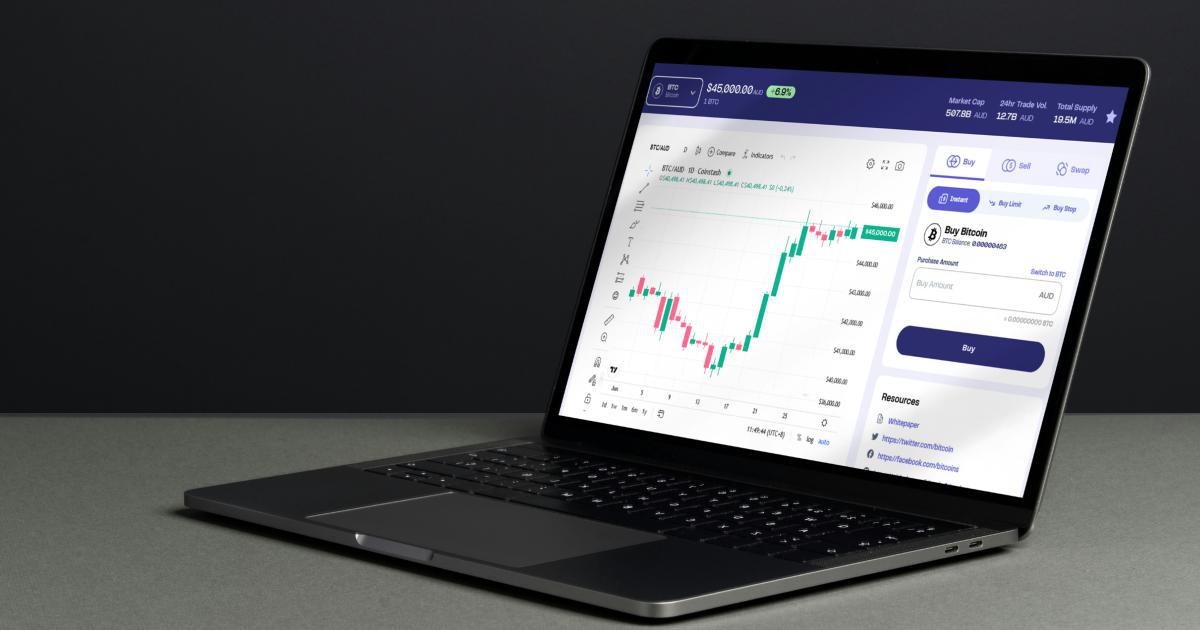What are the best forex technical analysis tools?

Forex trading is a dynamic and multifaceted field that demands careful analysis and decision-making. In this competitive world, successful traders rely on a variety of forex technical analysis tools to decode market patterns, predict future movements, and manage risk effectively. In this article, we explore what are the best forex technical analysis tools available, examine their unique features, and discuss how to incorporate them into your trading strategy for optimal results. From classic chart indicators to advanced algorithmic trading solutions, we will provide a comprehensive guide to help both beginners and seasoned professionals hone their skills.
Understanding Forex Technical Analysis Tools
Technical analysis in forex is the study of past market data, primarily price and volume, to forecast future movements. Forex technical analysis tools range from simple trend lines to complex statistical software, and they can be categorized broadly based on their function.
The Principles Behind Technical Analysis
At the heart of technical analysis are several key principles:
- Price discounts everything: All market fundamentals and external factors are eventually reflected in the price.
- Prices move in trends: Once a trend establishes, it is likely to continue until evidence suggests otherwise.
- History tends to repeat itself: Market psychology is predictable, and certain patterns tend to recur over time.
The effective use of technical analysis tools requires a thorough understanding of these principles and the ability to apply them in a fast-paced forex market.
Role of Candlestick Patterns, Charts, and Indicators
Charts are the cornerstone of technical analysis. Candlestick charts, line charts, and bar charts each offer unique insights into market behavior. Traders often look for specific candlestick patterns like doji, engulfing, and hammer formations to gauge possible market turnarounds or continuations.
Indicators such as moving averages, RSI (Relative Strength Index), MACD (Moving Average Convergence Divergence), and Bollinger Bands help traders determine momentum, fluctuations, and potential reversals. These analytic instruments are essential components in any trader’s toolkit.
Real-World Example: Using Moving Averages
Consider a trader watching a long daily chart of a major currency pair. By applying a 50-day moving average alongside a 200-day moving average, the trader can observe “golden cross” and “death cross” patterns. These events often signal significant bullish or bearish shifts, aiding in decision-making.
Forex technical analysis tools like these help in pinpointing entry and exit points in a crowded market, providing an edge in both intra-day and long-term trading.

Types of Forex Technical Analysis Tools
With a myriad of options available, selecting the right tools begins with categorizing them into various types. In this section, we explore several major categories and the benefits they offer.
Charting Software
Charting software is indispensable for visualizing forex market data over different time frames. These tools allow traders to plot historical price movements and overlay technical indicators. Popular charting software includes MetaTrader 4/5, TradingView, and NinjaTrader.
These platforms are particularly valued for their user-friendly interfaces and robust capabilities, offering real-time data, drawing functionalities, and a host of customization options. Learning to navigate advanced charting software provides traders significant autonomy in setting up automated alerts and developing personalized trading strategies.
Indicators and Oscillators
Indicators are formulas applied to price data to generate insights on trends, momentum, and volatility. Here are some pivotal indicators:
- Moving Averages: Smooth out price data to identify trends. Simple Moving Averages (SMA) and Exponential Moving Averages (EMA) both have distinct applications.
- RSI (Relative Strength Index): Measures speed and change of price movements, typically signaling overbought or oversold conditions.
- MACD (Moving Average Convergence Divergence): Provides visual cues through the convergence or divergence of moving averages, indicating potential momentum shifts.
- Bollinger Bands: Utilize volatility measures (standard deviation) to create dynamic channels around a moving average. They are instrumental in assessing extreme price movements.
These forex technical analysis tools underpin many trading strategies, and each tool serves a specialized function that can be tailored to an individual’s trading style.
Market Sentiment Tools
Market sentiment tools capture the collective mood of traders and investors, often through surveys, news analysis, and social media signal tracking. Tools like the Commitment of Traders (COT) report, sentiment indexes, and even AI-driven analysis fall into this category.
For example, by monitoring shifts in market bias through sentiment tools, a trader might predict reversals. A strong bullish sentiment combined with technical divergence might signal an overextended market on the verge of a correction, influencing the trader’s positioning decisions.
Automation Tools and Algorithmic Trading Systems
With the influx of technology, algorithmic trading systems have become widespread. Many forex traders leverage automated strategies to execute trades more precisely than manual methods allow. These systems use pre-set criteria based on technical indicators, ensuring that analysis is systematically applied.
Algorithmic tools range from proprietary trading bots to open-source software and require a clear understanding of both programming and market mechanics. When properly configured, these tools can handle rapid executions, effectively minimizing the emotional aspects of trading.
Software Integrations and APIs
Modern trading platforms often offer the ability to integrate different tools through APIs (Application Programming Interfaces). This capability allows traders to customize their trading environments, linking charting software with data feeds, news engines, and even social media sentiment analyzers.
Enhancements such as custom scripting, add-ons, and plugins have allowed many professional forex traders to develop sophisticated systems that combine multiple sources of data. This personalized approach to technical analysis underscores the importance of preparing a unified trading ecosystem that can adjust as market conditions evolve.
Comprehensive Review of Popular Forex Technical Analysis Tools
Let’s take a closer look at some of the best forex technical analysis tools predominantly used by market professionals.
MetaTrader 4 and MetaTrader 5
MetaTrader platforms have dominated the forex industry for over a decade. They offer a rich collection of technical analysis tools, including numerous customizable indicators and expert advisors (EAs), which allow for automated trading strategies. The combination of depth in analysis and the flexibility of customization makes MetaTrader a favorite among traders worldwide.
- Features such as multiple time frame analysis, custom indicators, and back-testing capabilities enhance its performance.
- The user community and the availability of third-party plugins further extend these platforms’ functionality.
TradingView
TradingView stands out with its web-based platform that emphasizes social trading and community-driven ideas. It offers a vast repository of public scripts where traders share custom indicators and trading strategies.
Its visually appealing charts, combined with an intuitive interface, make it an attractive option for both novices and experienced traders.
With real-time data, multiple chart layouts, and alerts, TradingView merges technical analysis with interactive features that foster community learning.
Its powerful charting capabilities make it a central hub for exploring forex technical analysis tools.
NinjaTrader
NinjaTrader is another professional-grade tool that offers advanced charting and analytics. It is highly popular among futures and forex traders due to its expansive ecosystem that not only supports technical analysis but also futures trading and algorithmic strategy development.
- Equipped with extensive customization options and expert advisors, NinjaTrader provides robust back-testing and simulation environments.
- The platform’s design facilitates complex order types and risk management, ensuring that traders have a holistic view of their strategies.
Additional Tools Worth Mentioning
Beyond these well-known platforms, several other tools have garnered a reputation for reliability and innovation:
- cTrader: Known for its clean interface and powerful analytical tools.
- eSignal: Offers comprehensive charting and data analysis features.
- QuantConnect: An algorithmic trading platform that integrates various data sources and advanced modelling capabilities.
- Sierra Chart: Valued for its precise tick charts and numerous technical indicators.
Forex technical analysis tools available on the market today range widely in features and capabilities. The choice ultimately depends on a trader’s individual strategy, technical skill level, and the degree of automation desired.

Advanced Techniques with Forex Technical Analysis Tools
While the foundation of forex trading lies in basic analysis, advanced techniques can elevate trading strategies significantly. By delving deeper into technical analysis, traders can combine multiple tools to form a robust, multifaceted trading system.
Multi-Time Frame Analysis (MTFA)
One advanced approach is Multi-Time Frame Analysis. MTFA involves analyzing the same currency pair across several different time frames, from minutes to weekly charts. This method helps traders focus on both macro and micro market trends, providing a more comprehensive view of market dynamics.
- Begin with a monthly or weekly chart to identify the overall trend.
- Narrow down to daily or 4-hour charts to spot potential turning points.
- Finally, use shorter time frames (like 15-minute or 5-minute charts) to fine-tune entries and exits.
This layered method boosts the reliability of each signal. When multiple time frames converge on a similar trend or reversal, confidence in the trade increases, reducing the likelihood of false signals.
Combining Oscillators and Trend Indicators
Integrating oscillators such as the RSI or Stochastic Oscillator with trend indicators like moving averages can create a powerful system. Oscillators are excellent at pinpointing overbought or oversold conditions, while moving averages can highlight sustained trends. The synergy between these tools often results in better-timed trades.
- For instance, if the RSI indicates an oversold condition at a point where the price is above the moving average, the confluence of signals can suggest caution, either delaying entry or prompting a short-term corrective strategy.
- Conversely, a bullish crossover in the moving averages, supported by an oversold RSI that starts rising, may signal a good entry point.
Combining diverse technical indicators helps to smooth out the noise inherent in forex markets, providing clarity and increased precision regarding market direction.
Algorithmic Trading and Software Automation
Another advanced strategy involves the use of algorithmic trading systems. These systems integrate technical analysis tools into their algorithms, constantly scanning market conditions based on predefined criteria. Many professional forex traders employ automation to mitigate human error and ensure that rules-based decisions are executed without emotional interference.
- Automated systems can analyze multiple indicators simultaneously across various instruments.
- They can execute orders at a speed that manual trading cannot match, capturing opportunities as soon as signals meet the set parameters.
- Additionally, these systems can run simulations and back-tests using historical data to refine strategies before they are deployed in live markets.
Algorithmic trading platforms like MetaTrader’s Expert Advisors or specialized software like QuantConnect facilitate this approach, ensuring that technical signals are acted upon with precision and immediacy.
Case Study: Combining Multiple Indicators in Practice
Consider a scenario where a trader is analyzing the EUR/USD pair:
The trader employs a 200-day SMA to determine the long-term trend.
On a 4-hour chart, a 50-day EMA is used to detect shorter-term movements.
Simultaneously, the MACD and RSI are referenced to determine momentum and potential reversal points.
During a trading session, the 4-hour chart shows the 50-day EMA crossing above the 200-day SMA, while the MACD simultaneously signals upward momentum and the RSI indicates that the market is not yet overbought. The confluence of these indicators, across multiple time frames, generates a high-confidence signal for a potential long position. By automating parts of this strategy, the trader ensures precision in entry and minimizes delays that could arise from manual execution.
The integration of advanced techniques like multi-time frame analysis, combining indicators, and algorithmic trading represents the evolution of forex technical analysis, tailoring traditional tools to meet the demands of modern, high-speed markets.
Risk Management and the Role of Technical Analysis Tools
Risk management is an essential yet sometimes overlooked aspect of forex trading. Effective risk management relies heavily on technical analysis tools to set stop-loss levels, determine position sizes, and monitor market volatility.
Stop-Loss and Take-Profit Strategies
Among the fundamental applications of technical analysis is the correct placement of stop-loss and take-profit orders. Popular methods include:
- Utilizing recent support and resistance levels.
- Incorporating average true range (ATR) to define volatility-based stop losses.
- Applying Fibonacci retracements to identify potential reversal zones.
Stop-loss orders prevent significant losses by exiting trades automatically when the market moves against a trader's position. Take-profit orders, on the other hand, secure gains by closing positions when a target price is reached. The correct interplay of these orders is critical and relies significantly on signals provided by forex technical analysis tools.
Position Sizing and Leverage Considerations
Forex markets offer high leverage, which can magnify both profits and losses. By using technical tools to assess market conditions, traders can make informed decisions on position sizing. For instance, if multiple technical indicators suggest a volatile market, a conservative position, coupled with tighter stop-loss orders, might be advisable.
Proper position sizing, when informed by technical analysis signals such as trend strength or market volatility readings, can significantly reduce the risk of ruin in forex trading.
Integrating Risk Management with Automated Strategies
As traders increasingly adopt algorithmic systems, integrating risk management parameters within the software has become crucial.
- Automated trading systems can be programmed to adjust position sizes based on current market volatility.
- They can also implement dynamic stop-loss adjustments or employ trailing stops as market conditions evolve.
This blend of risk management with automated technical analysis tools ensures that trades remain aligned with the trader’s risk tolerance, even in rapidly changing market scenarios.

Best Practices When Using Forex Technical Analysis Tools
Adopting forex technical analysis tools is not merely about selecting the right software or indicators; it also requires disciplined strategies and ongoing education.
Continuous Learning and Adaptability
The forex market is ever-changing, and staying informed about new tools and market trends is crucial. Regularly reviewing performance and keeping abreast of technological developments can greatly improve your technical analysis toolkit. Many traders participate in trading forums, webinars, and courses that delve into the latest advancements in technical analysis.
Combining Fundamental and Technical Analysis
While technical analysis focuses on historical price data, integrating fundamental analysis can provide additional context. A balanced approach that considers both technical signals and fundamental news can dramatically enhance trade selection. For example, if a country experiences significant economic changes, combining that knowledge with technical indicators improves the decision-making process.
Practice and Back-Testing
Effective trading strategies are honed through practice. Back-testing your strategies using historical data is a vital practice that helps validate the effectiveness of your chosen forex technical analysis tools. Back-testing can uncover any potential weaknesses in your approach, allowing you to adjust your strategy before risking capital in a live market.
Preventing Over-Reliance on Single Indicators
No single indicator or tool can guarantee success. A diversified approach that combines multiple tools can help filter out faulty signals. Over-reliance on one type of analysis, such as a singular moving average, can lead to missed opportunities or misinterpretations. Instead, consider using a mix of indicators that collectively confirm trends and trading signals.
Psychological Discipline
Even with the best tools, the human element of trading—psychological discipline—remains crucial. Emotional decision-making often leads to errors that technical analysis tools are designed to mitigate. By adhering strictly to your trading plan and setting pre-determined entry and exit points, you can leverage technical analysis tools more effectively.
Future Trends in Forex Technical Analysis Tools
The landscape of forex technical analysis tools is continuously evolving with advancements in technology. Future developments are likely to include enhanced AI-driven analytics, greater integration with big data, and increased automation. Let’s explore some of these emerging trends.
Artificial Intelligence and Machine Learning
The integration of AI and machine learning into forex technical analysis tools is set to transform trading. These technologies can analyze vast amounts of data faster than traditional methods, identifying subtle patterns and offering predictive insights that may be missed by the human eye.
- AI can process multiple indicators simultaneously and refine trading strategies in real-time.
- Machine learning algorithms are continuously evolving, incorporating live market data to improve their prediction accuracy.
- This evolution marks a shift from static models toward dynamic systems that adapt to changing market conditions.
Enhanced Data Integration
With the proliferation of APIs and cloud-based services, forex technical analysis tools are incorporating an ever-widening array of data sources. Future platforms will likely integrate:
- Social media feeds,
- News aggregators,
- Sentiment analysis,
- And even economic data in real time.
This real-time data fusion will offer traders a more holistic view of the market, allowing for more informed and reactive trading strategies.
Increased Customization and User-Centric Design
The future of forex technical analysis tools is also defined by increased customization. Platforms are moving towards user-centric designs that allow traders to tailor almost every aspect of their trading interface. From customizable dashboards to specialized plugins and third-party integrations, the focus is on providing a seamless experience that aligns with personal trading styles.
The Rise of Mobile Trading and Cloud-Based Platforms
In today’s fast-paced environment, the ability to access technical analysis tools from any device is becoming more important. Mobile trading platforms are now incorporating advanced charting software and customizable technical analysis functions, ensuring that traders are always connected to live markets.
- Cloud-based solutions further enhance flexibility by storing data and strategies online, accessible from various devices without sacrificing performance.
- As these platforms mature, the line between desktop and mobile trading continues to blur, offering consistent performance across all devices.
Concluding Thoughts
The best forex technical analysis tools are those that empower traders with comprehensive market insights, allowing them to make informed and timely decisions. Whether it’s traditional charting software like MetaTrader, innovative platforms like TradingView, or advanced algorithmic systems, the key to successful trading lies in the harmonious integration of these tools with robust risk management and ongoing education.
Forex technical analysis tools are essential in today’s forex market. They bridge the gap between raw data and actionable insights, ensuring that traders remain ahead of market trends. However, the tools themselves are just one part of a successful trading strategy. The wisdom lies in understanding how to use these instruments in concert with one’s trading plan, continuous learning, and rigorous risk management.
As technology continues to evolve, traders must adapt to new tools and strategies. The interplay between advanced technical analysis tools, AI integration, and comprehensive market data is poised to redefine forex trading in the coming years.
Whether you are a beginner or a seasoned trader, investing time in mastering these forex technical analysis tools can provide a competitive edge and build a solid foundation for long-term success. Embrace experimentation, stay informed, refine your strategies, and let data-driven insights guide your trading journey toward financial independence.
In summary:
- Understand basic principles and different categories of technical tools.
- Leverage both traditional indicators and emerging technologies.
- Integrate risk management for a holistic trading approach.
- Stay updated with continuous learning and back-testing your methods.
By meticulously combining these elements, you can craft a resilient and adaptable trading strategy that not only navigates but thrives in the volatile forex market.
Happy trading, and may your analysis be ever insightful!
Trade Smarter with TradingView
Are you tired of relying on outdated tools and missing out on profitable opportunities? TradingView provides powerful charting and analysis tools to elevate your trading game.
Join our global community of traders and gain access to real-time market insights, collaborative strategies, and advanced technical analysis features. Take your trading to the next level today.
Sophia Dekkers
52 posts written




